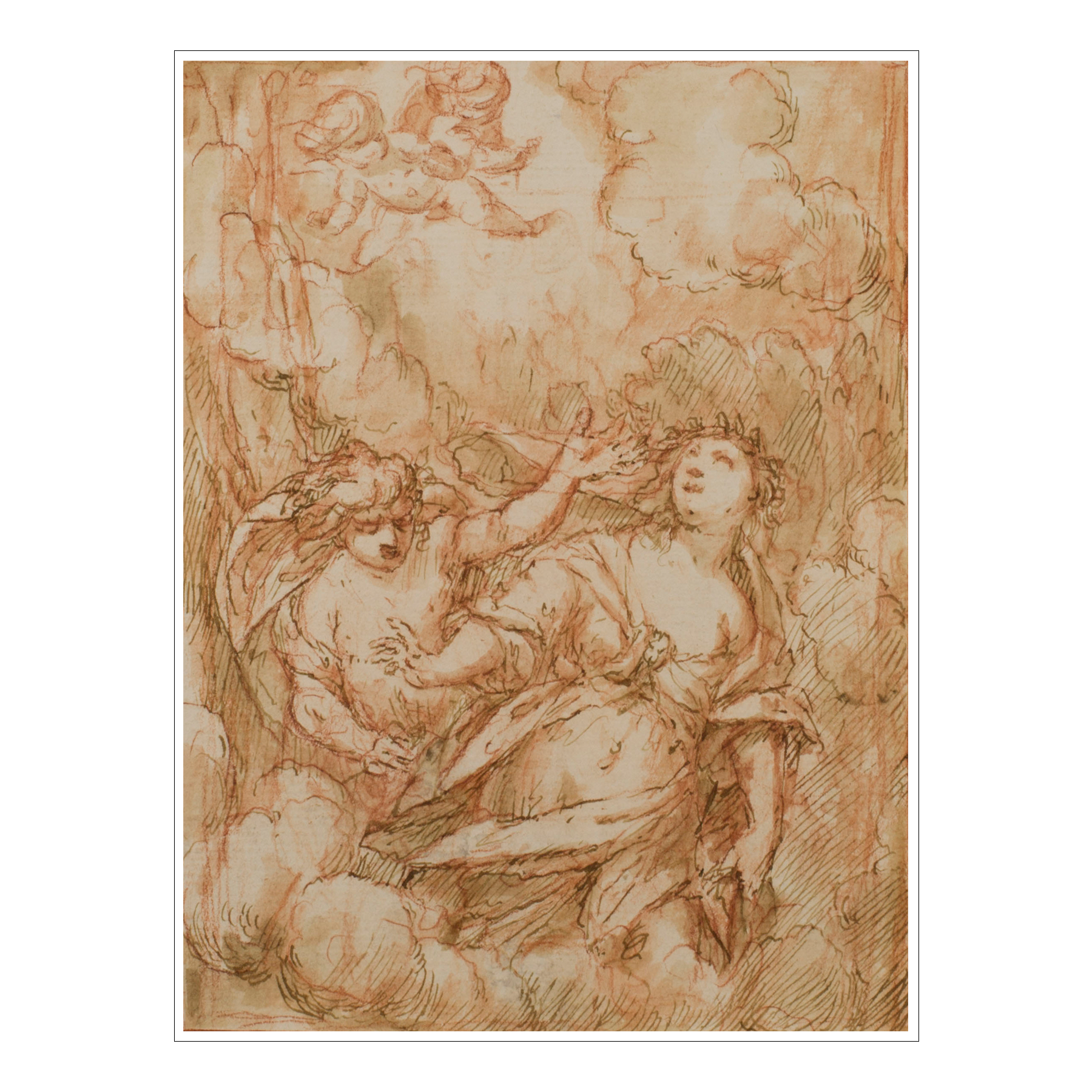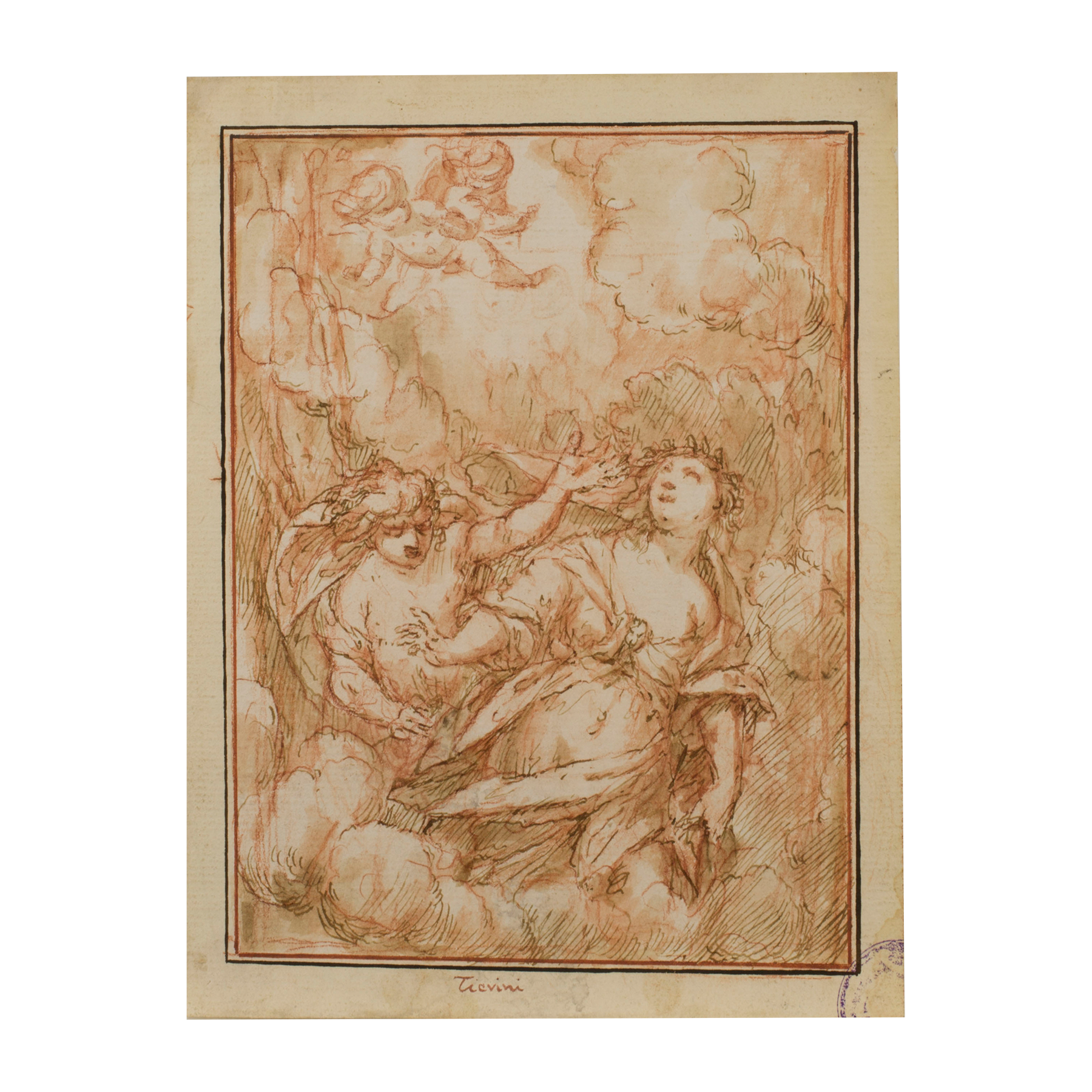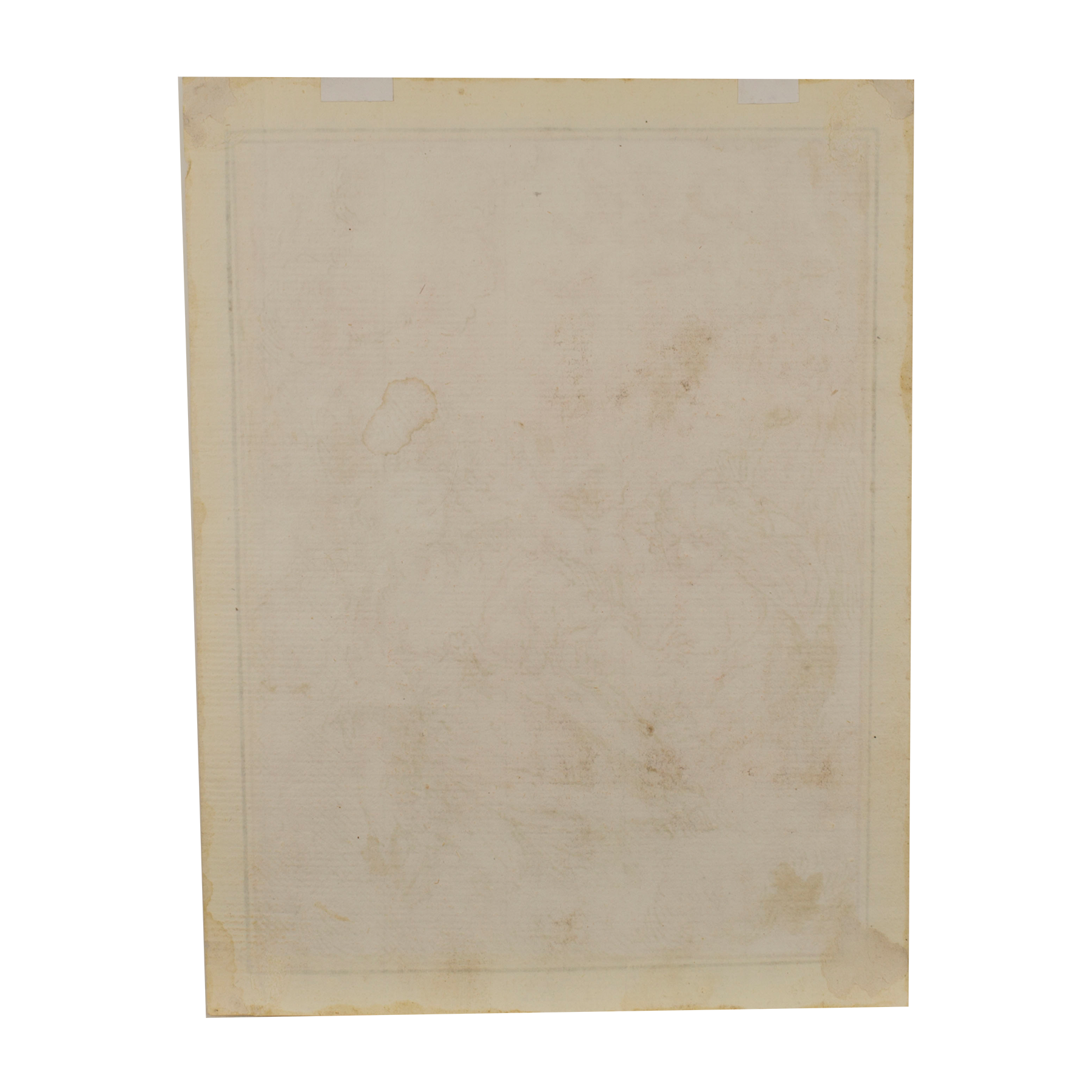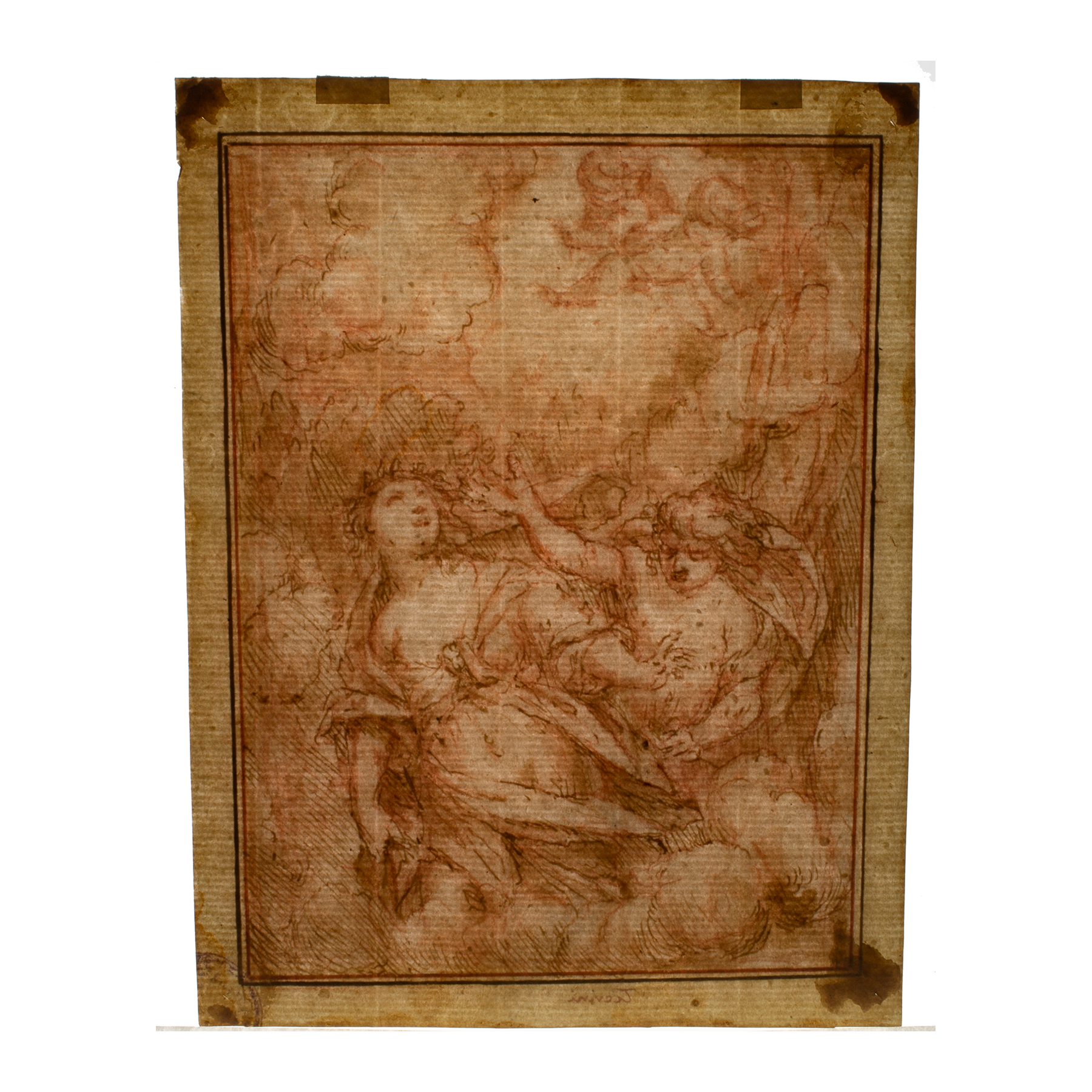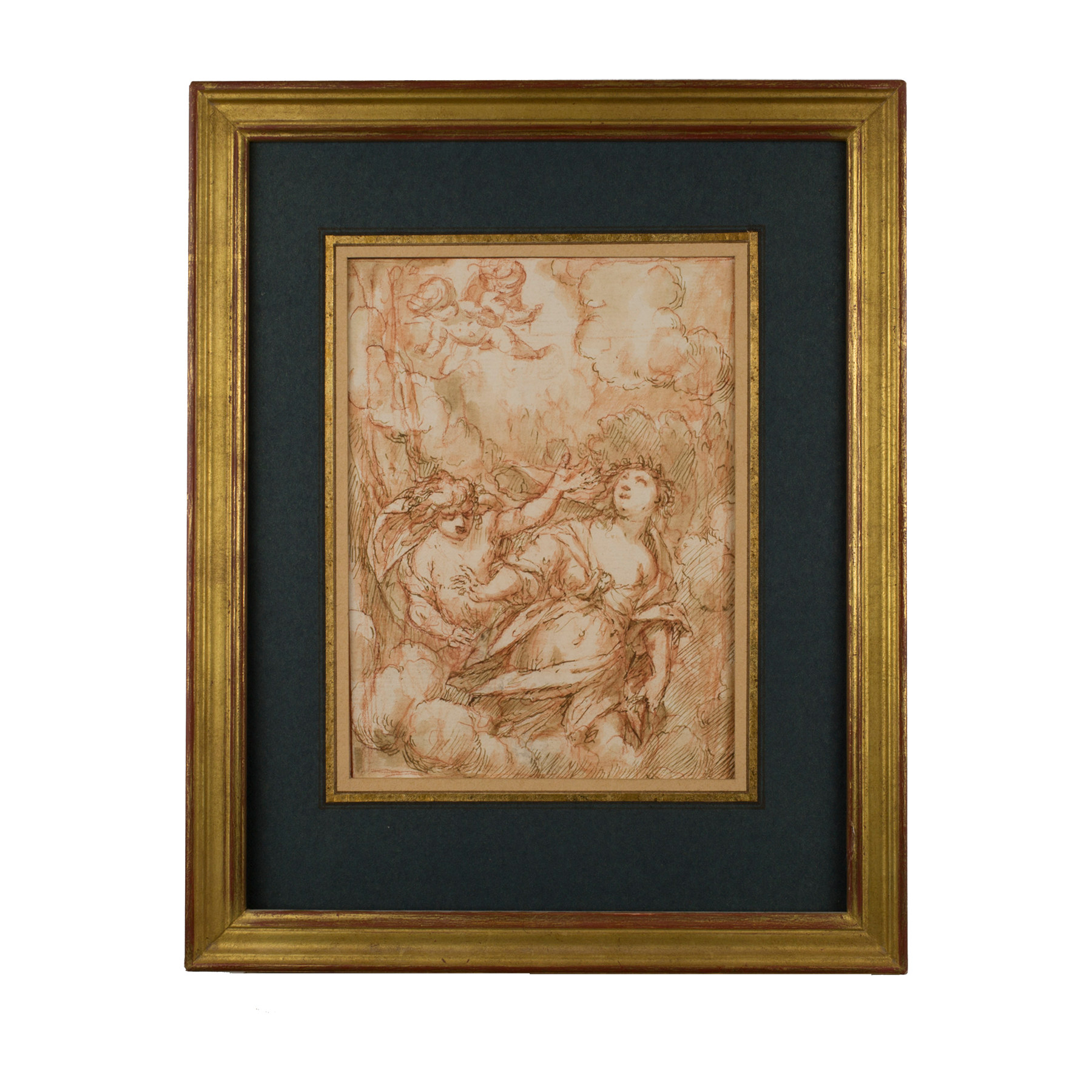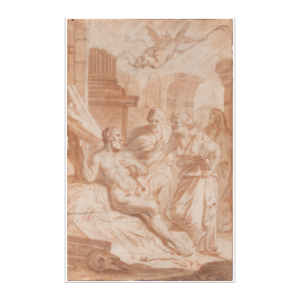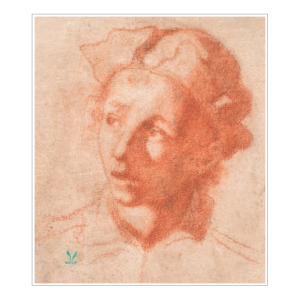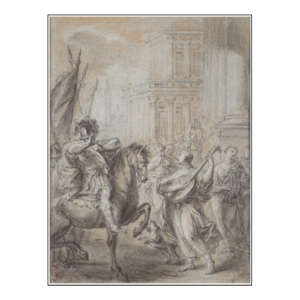Giuseppe Diamantini known as Il Cavaliere
Fossombrone, 1621-1705
Apollo and Daphne
Pen, brown and blood ink.
200 x 149 mm – 7 7/8 x 5 7/8 in.
Annotated Tiarini on old mount.
Giuseppe Diamantini, born in Marche in Fossombrone, received his first training in Bologna where he discovered and studied the art of Carracci. He then settled in Venice, where his activity is attested from 1654, and did not return to his hometown until 1678. Of his painted compositions, we only keep the ceiling of the choir of the San Giovanni Crisostomo church representing God the father surrounded by angels, then the Adoration of the Magi from the church of San Moses and the Mink of Saint Romuald now kept at the Correr Museum in Venice. He created several philosophers’ heads, executed in an original way, in Verona in the Bevilacqua house. His drawn and engraved work, much better preserved, reveals an art close to that of Pietro Liberi and Sebastiano Mazzoni. He shows a marked predilection for complex and enigmatic allegorical subjects, in accordance with his literary concerns.
This drawing represents the theme of Apollo and Daphne, taken from Metamorphoses d’Ovid[1] : the nymph Daphne, daughter of the river Ladon and the Earth, pursued by the ardor of Apollo, implores her father to be transformed into a laurel tree. Diamantini chooses to illustrate the fiery pursuit which precedes the transformation in order to highlight the baroque movement of the figures and drapes. The composition where the characters entirely occupy the stage, with some landscape elements being quickly sketched in the background, is characteristic of Diamantini’s works, notably his engravings executed around 1650-1660.
Condition report – Good general condition – slight stains in the margin.
[1] Book I, circa 490-567: “The madly enamored god pursues the nymph who always flees him. He appears by turns urgent, considerate, cheerful, pleading, revealing his identity and the extent of his powers, but in vain. The nymph flees even more, fueling the desire of the god who is more and more determined to seize her. (1, 490-542). Daphne, out of breath, almost joined, begs the river god Peneus, her father, to take away her beauty, the cause of her misfortune, and immediately she is transformed into laurel. Apollo lovingly hugs the shrub and decides that it will henceforth be his tree. Ovid lists the various symbolic functions assigned to Rome to the laurel, linked to the cult of Apollo. (1, 543-567).“
